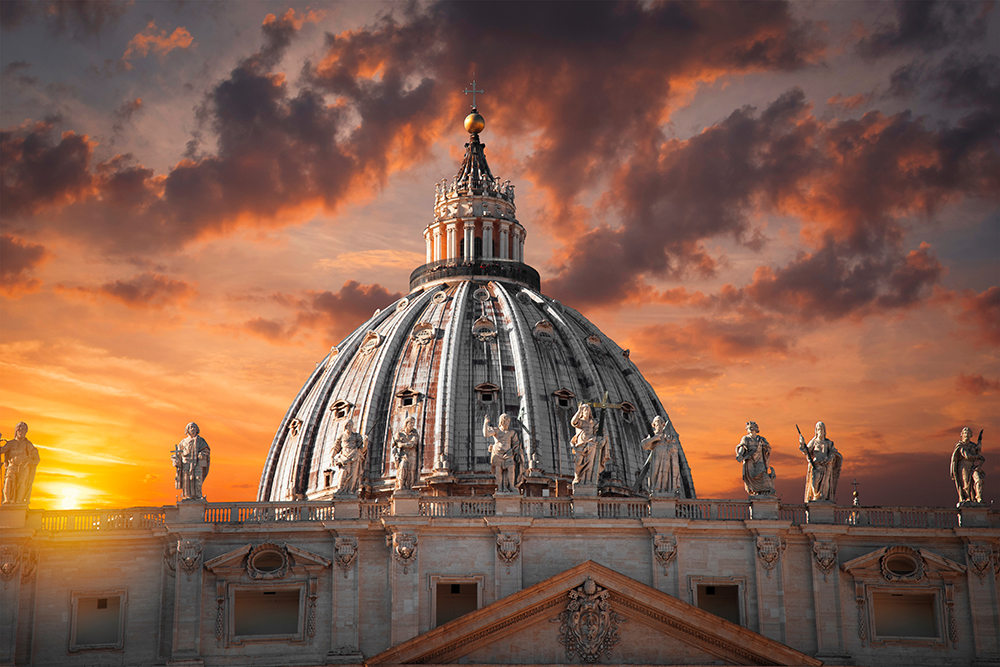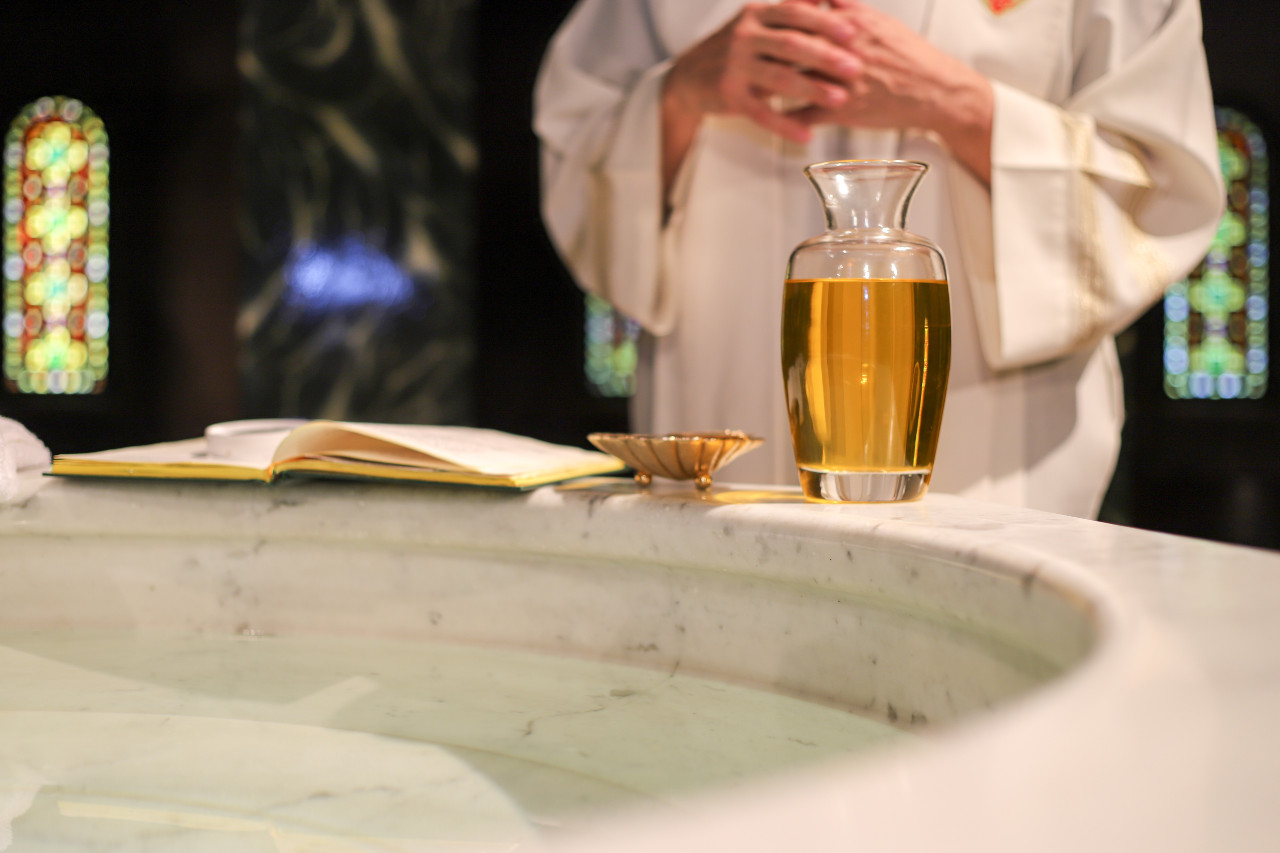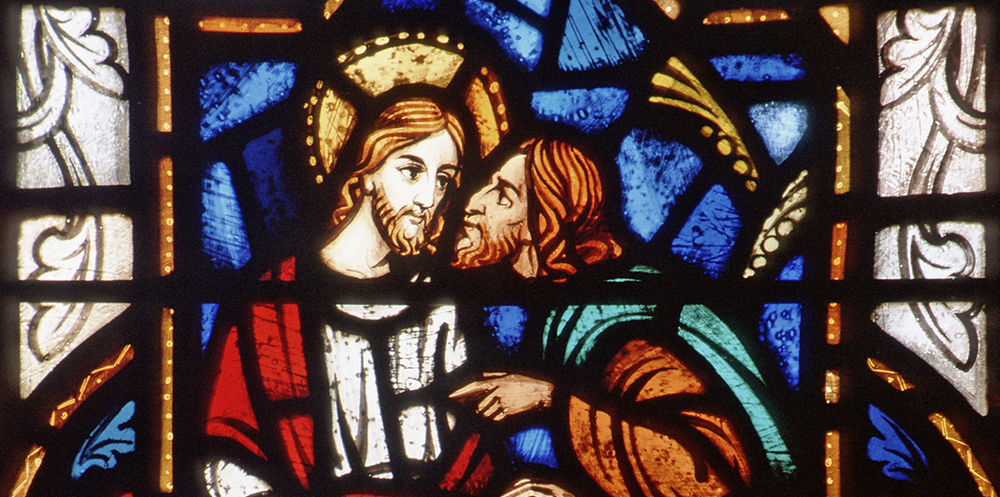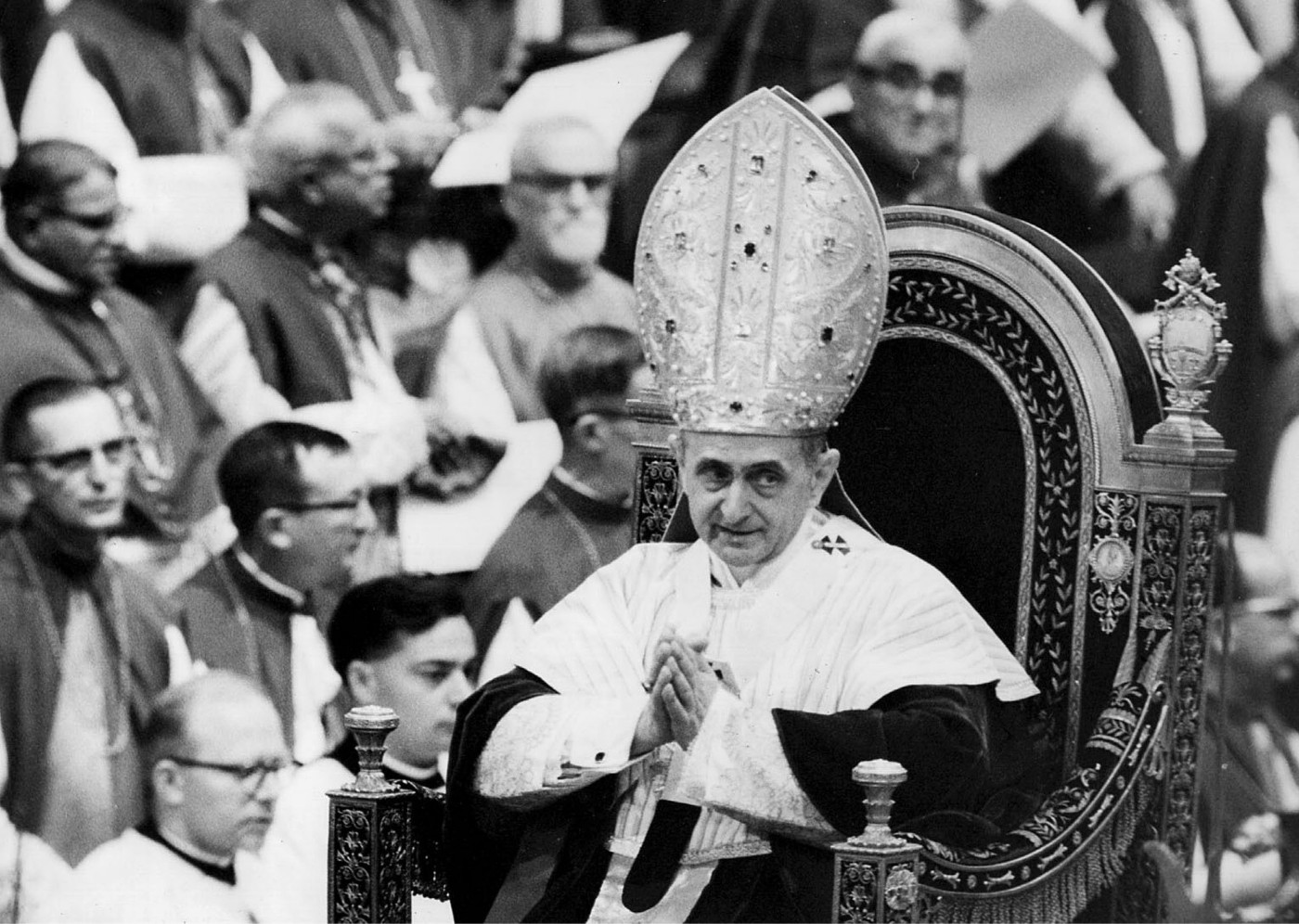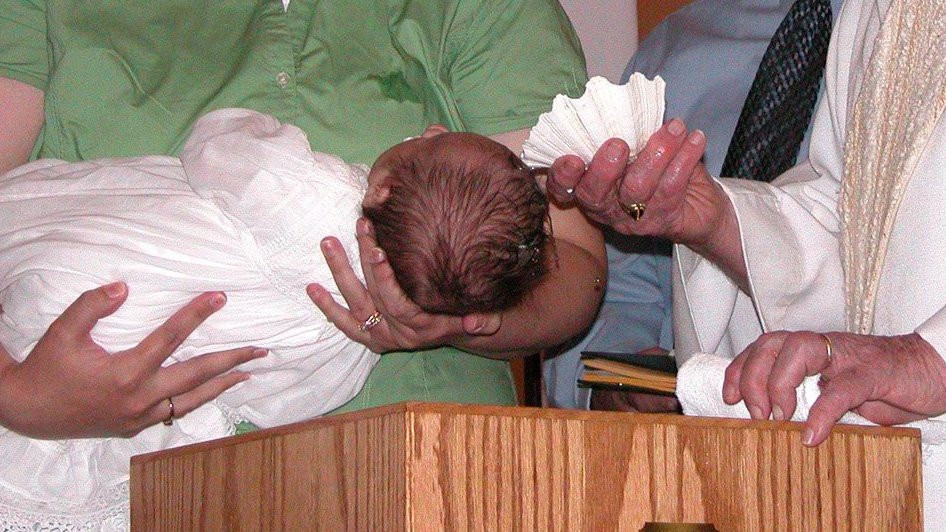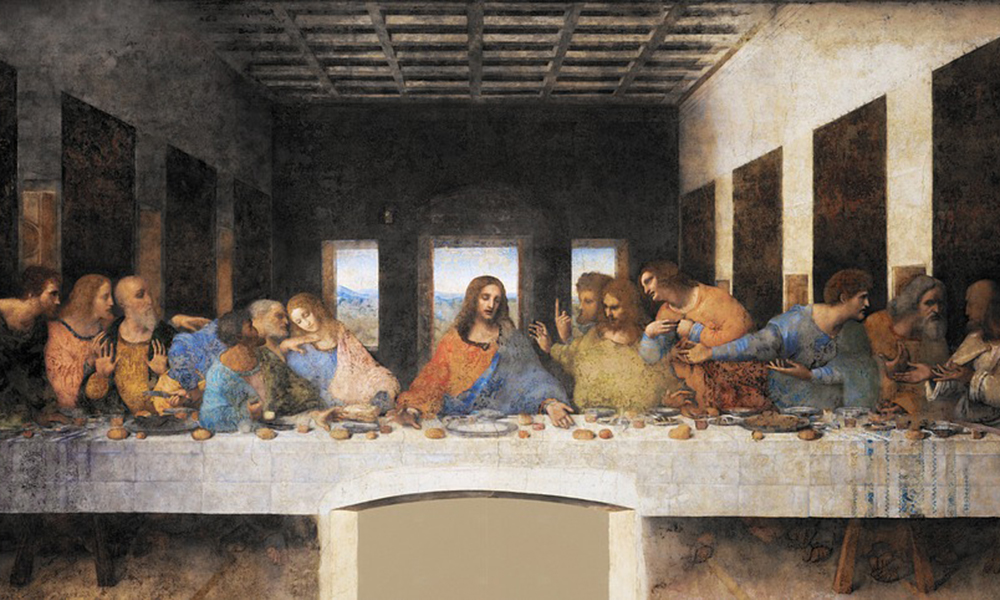From Peter’s sermon in Acts of the Apostles, we learned that baptism has always mattered. It has been commanded by Jesus himself since the beginning. The command that believers should receive baptism goes back not to Pentecost but at least to Easter.
We see this at the end of the Gospels of Mark and Matthew: after Jesus’s resurrection, in his instruction to the disciples. “Go into the whole world and proclaim the gospel to every creature. Whoever believes and is baptized will be saved; whoever does not believe will be condemned” (Mk 16:16). It’s a command given to all, to “every creature.” But notice here that although Jesus says whoever believes and is baptized will be saved, he doesn’t say whoever is not baptized will not be saved. Only those who do not believe will be condemned. This is an important point. The natural and normal logic of belief is that if one believes, then one will be baptized.
Jesus’s command in Matthew’s Gospel is slightly different. “Go, therefore, and make disciples of all nations, baptizing them in the name of the Father, and of the Son, and of the holy Spirit, teaching them to observe all that I commanded you. And behold, I am with you always, until the end of the age” (Mt 28:19-20). Here we see a few things. First, again, we see — considering Mark’s “every creature” is Matthew’s “all nations” — that it’s a command for everyone. It’s a command to baptize in the name of the Trinity — the Father, and the Son, and the Holy Spirit. Such is the form of baptism still mandated today. And we see here that the command to baptize precedes the command to teach. This is a significant detail, especially as we’ll come later to consider how the Church justifies infant baptism. But, more importantly, we learn from Matthew that baptism is how God remains with us, “until the end of the age.” This, for Matthew, is how the prophecy of Emmanuel, with which he began his Gospel, is fulfilled (Mt 1:23): by baptizing believers and making them disciples.
But, of course, Jesus didn’t invent baptism out of thin air. The origins of baptism can be traced even before Pentecost and even before Easter. When Jesus talked about baptism, when he commanded it, he was speaking from within a Jewish context, a context of prophetic hope. People in Jesus’ day did have a sense of the ritual of baptism.
Consider, for instance, John the Baptist, the cousin of Jesus. As all the Gospels relate, he too baptized people. Mark tells us John was baptizing people in the wilderness “for the forgiveness of sins.” His was a baptism, John himself said, of water and repentance. It was a baptism that was preparatory, in some sense, preceding another different baptism which is “with the holy Spirit” (Mk 1:4-8). John’s baptism makes sense in light of earlier Jewish practices, in light of ritual purifications done in preparation for acts of worship or encountering God. To understand what John was doing, we need to return to passages like this one from Ezekiel: “I will sprinkle clean water upon you to cleanse you from all your impurities, and from all your idols I will cleanse you. I will give you a new heart and place a new spirit within you” (Ez 36:25-26). Ezekiel here is speaking prophetically about the salvation of Israel, about the ethical conversion demanded of those preparing to encounter the saving God of Israel. Ezekiel’s exhortation is like Isaiah’s command to Israel and Judah: “Wash yourselves clean!” (Is 1:16). John is doing something like that — certainly dramatic but in no way foreign to Jewish religious imagination or experience. To anyone who’d listen, John was preparing them to meet God, preparing the way of the Lord, just like the prophets of old (Mk 1:3; Is 40:3).
And, of course, Christians picked up on the images of sprinkling and washing, reading them in some sense as metaphorical descriptions of baptism — bapto in Greek, meaning “to dip” or “to immerse.” At the very least, Christian baptism was similar to John’s baptism and these other prophetic washings in its mechanics. But yet it was different. John the Baptist himself said as much (cf. Mt 3:11; Mk 1:8). But how?
In John’s Gospel, we get a brief indication of Jesus’s practice of baptism, but it’s somewhat mysterious. First, we hear that after his midnight conversation with Nicodemus, “Jesus and his disciples went into the region of Judea, where he spent some time with them baptizing” (Jn 3:22). However, a few verses later, John wants to make clear that it was “only his disciples,” not Jesus, actually doing the baptizing (cf. Jn 4:2).
But still, how is the baptism of Jesus different from that of John? To answer this question, we should turn to that famous chapter in John’s Gospel — John 3 — detailing Jesus’ midnight conversation with Nicodemus. In that conversation, Jesus tells Nicodemus that to see and to enter the kingdom of God, one must be born anōthen, which can mean either “again” or “from above.” Nicodemus thinks Jesus is talking about being physically reborn — again — but that’s not what he’s saying. Jesus means anōthen in a more spiritual sense. The rebirth Jesus is talking about is “of water and Spirit.” That’s how a person may “enter the kingdom of God” (Jn 3:3-5). The baptism of Jesus, therefore, is about a rebirth from above, allowing the one reborn to see and enter the kingdom.
But it’s not just about seeing and entering the kingdom of God. In Mark, we see Jesus identify baptism with his death. When James and John foolishly ask to sit beside Jesus in glory, he asks them, “Can you drink the cup that I drink or be baptized with the baptism with which I am baptized?” (Mk 10:38). It’s a figure of speech we don’t use much anymore. The cup here calls to mind the cup of his suffering and death, an image Jesus himself used (cf. Mt 26:39; Mk 14:36; Lk 22:42; Jn 18:11). It’s the same in Luke and John. “There is a baptism with which I must be baptized, and how great is my anguish until it is accomplished!” Jesus says in Luke (12:50). Notice the words “it is accomplished.” In John, Jesus repeats these same words from the cross (cf. Jn 19:30). The earliest Christian readers of the Gospels would’ve picked up on that; they would’ve made that connection. For our purpose, though, it simply uncovers yet another layer to the meaning of Christian baptism: that it’s also somehow a participation in the death of Jesus.
So the baptism of Jesus is different from John’s baptism. It’s a rebirth in water and Spirit, which is also seeing and entering the kingdom of God, which is also mysteriously somehow identified with the death of Jesus. And also Jesus commands it; all believers are to receive baptism. It doesn’t appear to be optional. But there is a lot more to learn. For that, however, we’ll need to turn to Paul.
Father Joshua J. Whitfield is pastor of St. Rita Catholic Community in Dallas and author of “The Crisis of Bad Preaching” (Ave Maria Press, $17.95) and other books. Read more from the series here.


